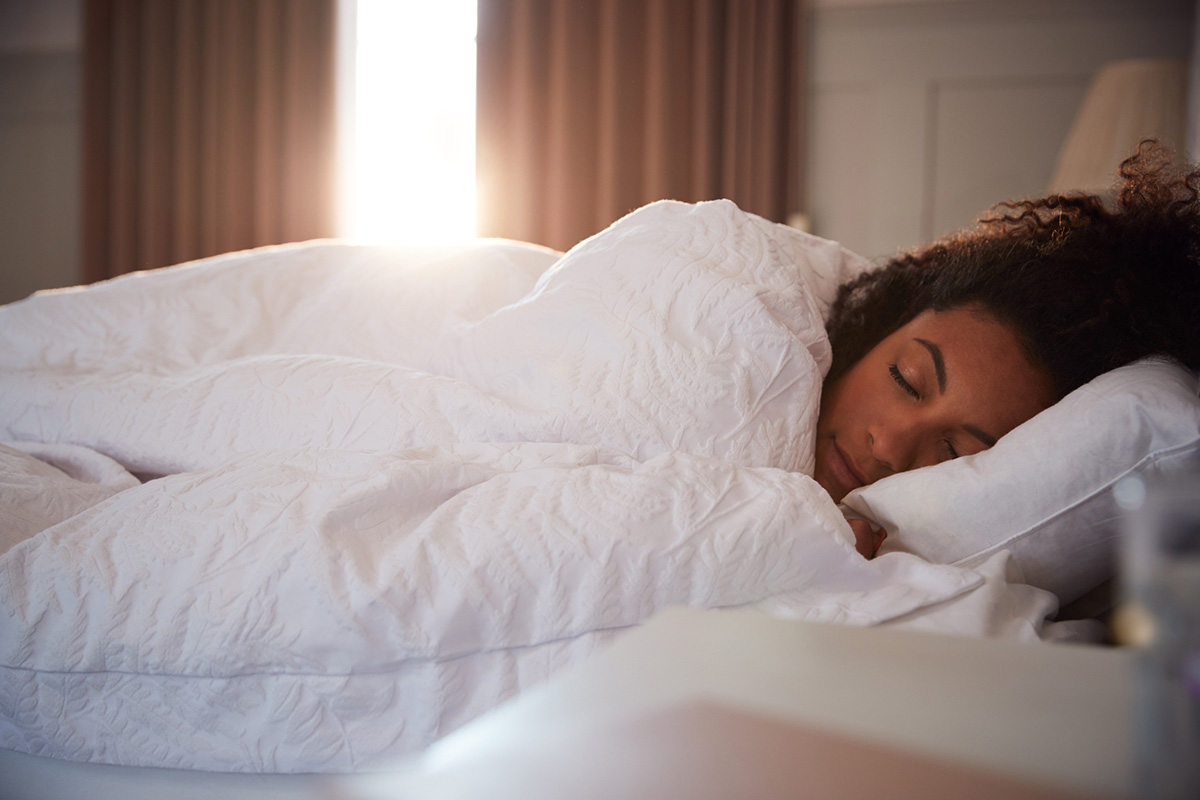The Buzz Around Weighted Blankets

Occupational therapists started using weighted blankets more than 20 years ago. They were first used to help children with anxiety and autism spectrum disorder.
In 2010, weighted blankets started gaining more mainstream popularity, and by 2017, weighted blankets were everywhere. These days, there are dozens of options when it comes to weighted blankets. Sales tend to surge during stressful times, so weighted blankets became a top seller during the COVID-19 pandemic.
How Weighted Blankets Work
Weighted blankets get their heft from plastic or glass beads or other fillers. This extra weight — typically between 5 and 30 pounds — promotes a therapeutic technique called deep pressure stimulation (DPS) or pressure therapy.
Deep pressure stimulation (DPS) is a method of applying firm but gentle pressure (by hands, blankets, or special massage tools) to a person in an effort to make the person feel more secure and relax the nervous system. Weighted blankets apply a light pressure to the body (similar to a hug), which calms the nervous system and increases dopamine and serotonin in the brain. Dopamine and serotonin are known as the “feel-good chemicals,” so an increase of these chemicals causes the person to feel calm, relaxed, and happy.
This is why weighted blankets are now being used to help alleviate the symptoms associated with a variety of conditions including anxiety and depression, chronic sleep disorders (such as insomnia), attention deficit hyperactivity disorder (ADHD), post-traumatic stress disorder, and autism.
Choosing the Right Weighted Blanket
If you’re in the market for a weighted blanket, the weight is naturally going to be one of the first factors to consider. The ideal weight range should be enough that it’s noticeably different than a regular blanket, but not so much that it becomes uncomfortable. There are a few things to keep in mind when shopping.
For adults: Choose a blanket that weighs somewhere between 8 to 12 percent of your body weight. This means, for example, that a 150-pound adult should be looking for a weighted blanket between 12 and 18 pounds.
For kids: Experts recommend choosing a blanket that is 10 percent of your child’s weight, plus a pound or two. That means, for a 50-pound child, a blanket should be between 8 to 12 pounds. This can vary depending on your child’s needs and comfort level. Luckily, there are charts to help you determine which blanket is best for your child. And, as always, speak with your child’s pediatrician before introducing a weighted blanket into their sleep routine.
Material
Weighted blankets are made out of a variety of fabrics and filled with different things. Fabrics include cotton, satin, and flannel. There are also blankets that have a cooling effect, like ones made out of bamboo. They can be filled with plastic pellets, glass beads, and weighted fiber. There are also non-toxic fillers that may be best for children. In addition, some blankets are machine-washable whereas others are not. It’s important to follow the cleaning instructions on the label to avoid damaging the blanket.
Safety Tips
While weighted blankets are a safe option for many adults, they aren’t for everyone. Make sure to read the label and abide by any warnings, including who should avoid weighted blankets. The person using the weighted blanket needs to be able to safely lift the blanket off themselves.
People who shouldn’t use weighted blankets include:
Infants and toddlers (due to the risk of entrapment or suffocation)
People with respiratory or circulatory problems, including those with asthma and type 2 diabetes
People with sleep apnea (weighted blankets may restrict airflow)
If you are unsure if a weighted blanket is right for you, check with your doctor.




